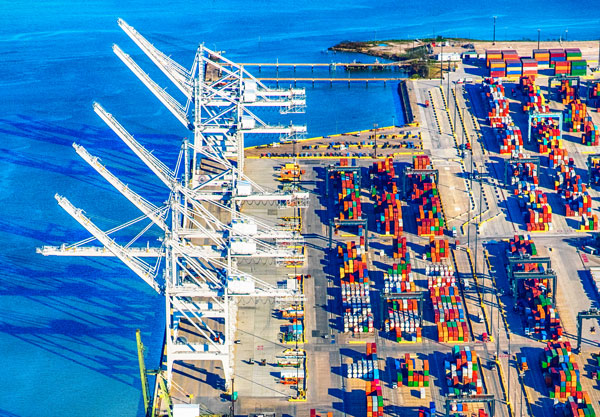In October 2023, British equipment manufacturer JCB North America announced a second U.S. plant will be built in San Antonio, creating 1,500 new jobs. Its Savannah, Georgia, plant employs 1,000. JCB will join other foreign direct investors in the San Antonio area, including OCI Solar Power, a subsidiary of South Korea-based OCI Holdings, Energía ERCAM, headquartered in Spain, and Japanese automotive components manufacturer AISIN.
Every metro in Texas is home to companies based outside the United States, including Tronics Microsystems (France) and Kubota (Japan) in the Dallas-Forth Worth Metroplex, Siemens (Germany) and SKANSKA (Sweden) in Houston, and BAE Systems (U.K.) and CKD (Japan) in Austin.
These and more than 1,700 other foreign-owned companies employ more than 660,000 Texans, 30% of whom work in the manufacturing sector. The Global Business Alliance (GBA), a Washington, D.C.-based organization that advocates for international investment in the U.S., reports that FDI jobs account for 6.1% of total employment in Texas, more than each of its bordering states. From 2011 to 2021, according to GBA, FDI employment increased 39% in Texas whereas overall private-sector employment in the state grew 23%.
Texas Economic Development & Tourism reports that since 2015 the state has attracted close to 1,400 FDI projects worth more than $97 billion, resulting in the creation of more than 110,000 new jobs.
JCB CEO Graeme Macdonald explained the case for Texas in a statement when the San Antonio facility was announced: “Texas is a vibrant and growing economy, and the state offers great advantages in terms of a central location, as well as good highway and port access. The city of San Antonio also has a well-established skills base, which makes it a very attractive place to set up a factory.”
“Good highway and port access” may be an understatement. Texas is home to 19 seaports (11 of which are deepwater ports), the inland Port of Laredo on the U.S.-Mexico border, and the largest Gulf Coast port at Houston. Its 34 foreign trade zones, 10,500 miles of freight railway, more than 314,000 miles of public roads and Interstates and 26 commercial airports facilitate importing parts and components and exporting finished goods globally. United and American Airlines operate major hubs at Houston Intercontinental and Dallas/Fort Worth International Airports, respectively; Southwest is the dominant air carrier at Dallas Love Field.
More Than a Fifth of U.S. Exports Came from Texas in 2023
For more than two decades, Texas has been the top exporting state in the U.S., and it’s been the top state for high-tech exports for the past 11 years. Exports in 2023 were valued at more than $444 billion. What’s more, Texas exports accounted for 22% of U.S. exports that year.
The top six non-energy exports by trade dollar value in 2023, according to the U.S. Bureau of Labor Statistics, were chemical manufacturing ($58.3 billion); computer and electronic product manufacturing ($52.9 billion); transportation equipment manufacturing ($27.5 billion); machinery manufacturing ($26.8 billion); electrical equipment, appliance and component manufacturing ($14.4 billion); and fabricated metal product manufacturing ($9.3 billion).
Energy remains Texas’ chief export, particularly crude petroleum, natural gas and natural gas liquids, fuel oil, light oils and other petroleum products. Such exports were valued at more than $100 billion in 2020, according to the U.S. Bureau of Labor Statistics.

